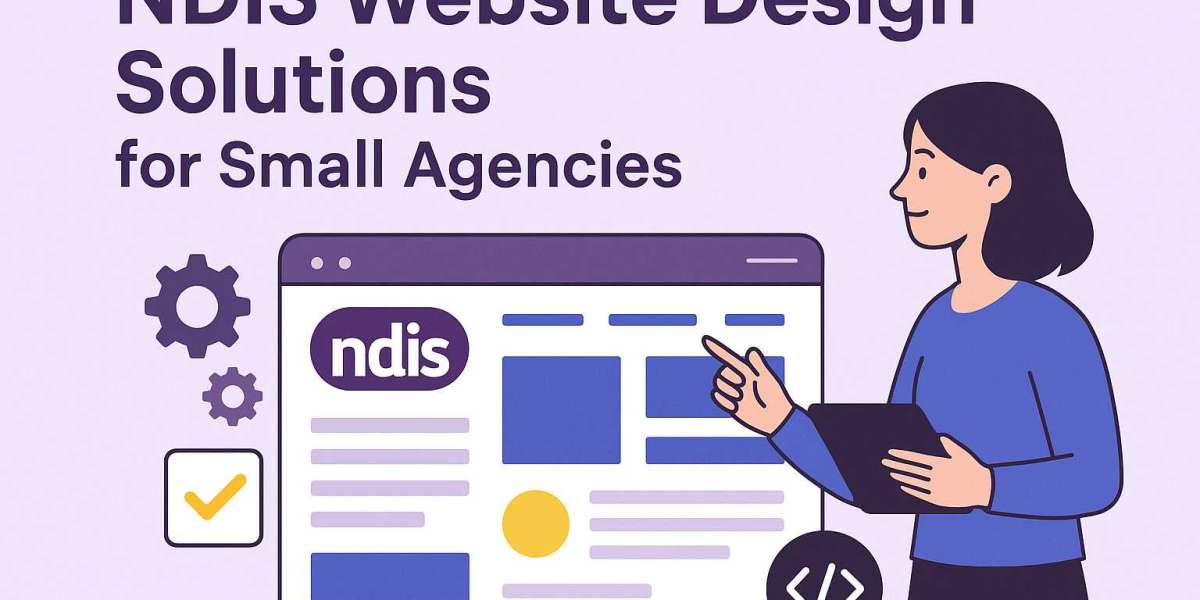In today’s digital age, having a professional and accessible website is no longer optional for NDIS providers, including small agencies—it is essential. The National Disability Insurance Scheme (NDIS) has transformed the way disability services are delivered in Australia, and a strong online presence ensures that small agencies can reach clients, build trust, and compete effectively. This guide explores NDIS website design solutions specifically tailored for small agencies, focusing on accessibility, functionality, and user experience.
Why NDIS Website Design is Important for Small Agencies
Small agencies often face unique challenges compared to larger organizations. Limited budgets, smaller teams, and fewer resources can make creating a professional website seem overwhelming. However, a well-designed NDIS website can help small agencies:
Enhance Credibility: A clean, professional website reassures clients and their families that your agency is reliable and trustworthy.
Improve Accessibility: NDIS websites must meet accessibility standards to ensure that all users, including those with disabilities, can navigate the site easily.
Increase Engagement: Engaging content, easy navigation, and clear calls-to-action can encourage visitors to explore services and contact your agency.
Boost Conversions: A website optimized for user experience can convert casual visitors into long-term clients or service users.
By focusing on these areas, small agencies can compete with larger providers and expand their reach within the NDIS community.
Key Features of Effective NDIS Website Design
A successful NDIS website combines functionality, aesthetics, and accessibility. For small agencies, these features are particularly crucial because every design decision can impact client trust and engagement.
1. Accessibility and Compliance
Accessibility is a non-negotiable aspect of NDIS website design. Websites must comply with Web Content Accessibility Guidelines (WCAG) to ensure users with disabilities can access information. For small agencies, this means:
Providing alternative text for images.
Ensuring proper color contrast for readability.
Designing intuitive navigation for screen readers.
Adding captions or transcripts for multimedia content.
Compliance not only enhances user experience but also reflects your agency’s commitment to inclusivity—a core principle of NDIS.
2. Mobile-Friendly Design
Many clients access websites via smartphones or tablets. A responsive, mobile-friendly design ensures that your website functions seamlessly across all devices. Small agencies benefit from mobile optimization by increasing accessibility and engagement for users who rely on mobile devices.
3. Clear and Engaging Content
Content is the backbone of any website. Small agencies should focus on creating clear, concise, and informative content that explains services, eligibility criteria, and processes. Using headings, bullet points, and short paragraphs makes information easy to digest. Incorporating client testimonials and success stories adds credibility and humanizes your agency.
4. User-Centric Navigation
A confusing website can frustrate visitors and reduce engagement. Small agencies should prioritize simple, intuitive navigation. Key elements include:
A well-organized menu structure.
Quick access to services and contact information.
Prominent calls-to-action, such as “Book an Appointment” or “Contact Us.”
Streamlined navigation ensures visitors find the information they need quickly, improving their overall experience.
5. Integration with NDIS Tools and Systems
NDIS providers often use specific tools for service management, reporting, or client communication. Integrating these tools into your website can save time and improve efficiency. Examples include:
Online service booking and scheduling.
Secure client portals for document sharing.
Forms for referrals, feedback, or inquiries.
Such integrations help small agencies deliver a professional service experience without adding unnecessary complexity.
Cost-Effective NDIS Website Solutions
Small agencies typically operate with limited budgets, so cost-effective web design solutions are essential. Consider the following strategies:
Website Builders: Platforms like WordPress, Wix, or Squarespace offer customizable templates suitable for NDIS providers. These platforms are affordable, easy to manage, and scalable as your agency grows.
Pre-Designed Templates: Choosing templates specifically designed for healthcare or disability services can save time while ensuring compliance with accessibility standards.
Freelancers or Small Agencies: Hiring freelance web designers or small web design agencies can provide personalized services at lower costs than large agencies.
Incremental Upgrades: Start with a basic, fully functional website and gradually add features like client portals, blogs, or multimedia content.
By strategically investing in essential features first, small agencies can launch a professional website without straining their budget.
SEO Strategies for Small NDIS Agencies
A website’s design alone isn’t enough; it must be discoverable. Search Engine Optimization (SEO) ensures that your agency appears in search results when potential clients search for NDIS services in your area. Effective strategies include:
Local SEO: Optimize your website for location-specific keywords to attract clients in your service area.
Content Marketing: Create blog posts, guides, and FAQs that address common client questions.
Meta Tags and Descriptions: Use descriptive titles, headers, and meta descriptions to improve search rankings.
Performance Optimization: Ensure fast loading times and smooth navigation to reduce bounce rates.
Even small improvements in SEO can significantly increase your visibility and client engagement.
Enhancing Trust Through Design
For small agencies, trust is everything. Your website should convey professionalism, reliability, and care. Visual cues like consistent branding, high-quality images, and accessible content help establish credibility. Highlighting your team’s qualifications, client testimonials, and NDIS registration details further builds trust and reassures visitors that your agency is committed to quality service.
Maintenance and Support
A successful NDIS website requires ongoing maintenance. Small agencies should plan for:
Regular content updates to keep information current.
Software and security updates to protect client data.
Continuous accessibility audits to meet evolving standards.
Partnering with a web designer who offers ongoing support ensures your website remains functional, secure, and compliant over time.
Conclusion
For small agencies, investing in professional NDIS website design solutions is not just about aesthetics—it’s about accessibility, trust, and client engagement. By focusing on accessibility, mobile-friendly design, clear content, intuitive navigation, and SEO, small agencies can compete effectively in the NDIS landscape. Cost-effective solutions, incremental upgrades, and ongoing support make it possible to create a high-quality website without exceeding budgets.
For agencies looking to expand their digital footprint and enhance client engagement, exploring professional website design options is crucial. Just as NDIS providers aim to deliver the best care and support, an optimized, accessible website ensures that potential clients can easily find, navigate, and trust your services.
For businesses looking to explore related digital solutions, such as healthcare or service-focused platforms, professional dental website design Australia services offer valuable insights into creating user-friendly, compliant, and visually appealing websites.







